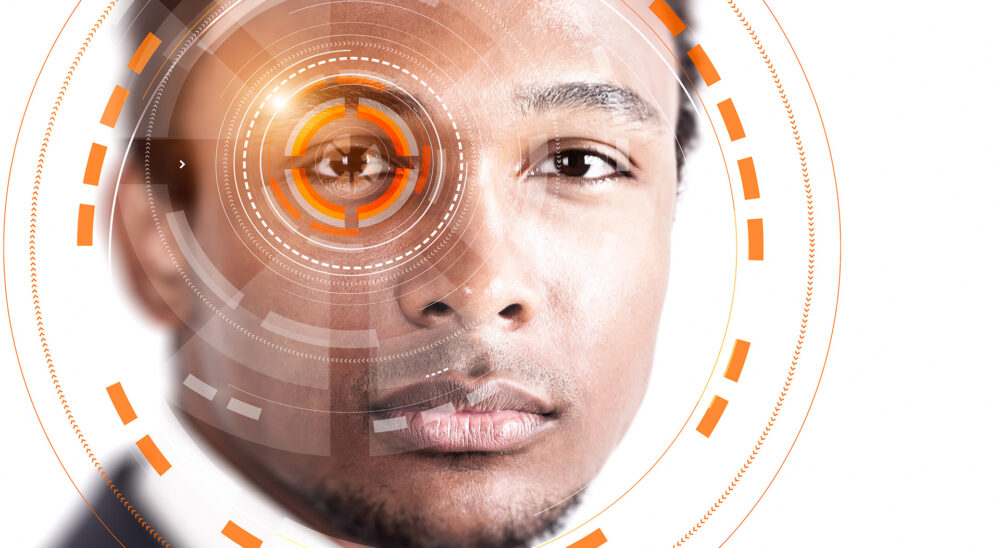Facial recognition technology is becoming more widespread and impactful. It’s being used in many areas, from managing crowds at events to gathering data for marketing. This revolutionary technology relies on advanced algorithms that can quickly analyse and compare people’s facial features with images stored in a computer database.
Last year, Alex Muthua’s master’s research under supervision of Professor Thinus Booysen and Dr. Rensu Theart focused on improving facial recognition for people with darker skin tones by using infrared light. Building on Muthua’s findings, Katlego Mbatha has embarked on another exciting research project this year. Katlego’s work, also supervised by Professor Booysen and Dr Theart, titled “Skin Tone Estimation under Diverse Lighting Conditions,” tackles a critical issue in facial recognition: the bias against individuals with darker skin tones.
Background: Enhancing Skin Tone Estimation
A key building block to removing biases in face recognition solutions is accurate skin tone estimation. The perception of skin tone is heavily impacted by the lighting conditions under which it is observed, whether by the human eye or by a camera sensor. Mbatha’s research aims to improve the accuracy of skin tone estimation under diverse lighting conditions using advanced machine-learning techniques.
Skin tone estimation is vital for facial recognition; it also plays a significant role in medical diagnosis and the cosmetic industry. Accurate detection of skin pigmentation can help diagnose skin conditions and provide skincare support. For the cosmetic sector, it aids in developing products that better match diverse skin tones.
These advancements in facial recognition technology are not just about technological progress; they are about making the technology more inclusive and reliable for everyone. By addressing the biases in existing systems, researchers like Alex and Katlego are paving the way for more equitable and useful applications, ensuring that this powerful tool benefits us all.
The Study: Methodology and Findings
Mbatha’s study used a convolutional neural network (CNN) to refine and evaluate models for estimating skin tone. To ensure fairness and accuracy, these models must remain consistent across various skin tones and lighting conditions. The research employed the Monk Skin Tone Scale, a 10-point scale representing a broad spectrum of skin tones. A comprehensive dataset of 21,375 images was collected from volunteers with diverse skin tones, making this study one of the most extensive in its field.
The findings reveal that a regression model significantly outperforms other models, achieving an estimated-to-target distance of 0.5. When applying a threshold of 2 for the estimated-to-target skin tone distance across all lighting conditions, the model attains an average accuracy of 85.45% and an even higher accuracy of 97.16% under more consistent lighting. The Monk Skin Tone Scale was divided into three categories: lighter, middle, and dark skin tones. The results indicate that models were most accurate for lighter skin tones, followed by dark and then middle skin tones.
Overall, the skin tone estimation achieved an average error distance of 16.40±20.62 in the LAB colour space, marking a significant improvement over previous methods. This level of accuracy is crucial for reducing bias in facial recognition technologies and for applications requiring precise skin tone differentiation.

Implications and Future Directions
Mbatha’s research, sponsored by MTN South Africa, marks a significant advancement in tackling the biases present in current facial recognition systems. This study enhances the accuracy of skin tone estimation under various lighting conditions, contributing to the creation of more inclusive and equitable technologies.
As facial recognition technology continues to evolve, future research could aim to further refine these models to handle an even broader range of conditions and applications. Building on the groundwork laid by this and previous studies, ongoing research in this field holds the promise of making facial recognition technology more fair and universally applicable.
Download and read the full research paper at https://www.mdpi.com/2313-433X/10/5/109#





